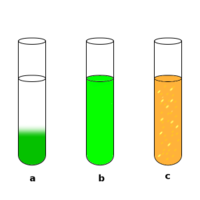
Photo from wikipedia
Overcrowded hospitals in its different process’s levels is a very common issue all over the globe. Research through different works have studied this problem from different angles. Most of those… Click to show full abstract
Overcrowded hospitals in its different process’s levels is a very common issue all over the globe. Research through different works have studied this problem from different angles. Most of those focused on a very specific part of the internal flows. This study presents a mathematical model aiming to reflect patient flow and resources usage. This model presents a new perspective on how it is possible to organize a hospital flow for inpatients of different pathologies. It is based on Non-Homogenous Discrete Time Markovian chains. It takes into consideration the patient’s pathology, survival function and the current beds distribution and discharges. To model the different variations of a patient’s flow, our work uses an actual case study to validate that our mathematical model based on Markov Chains can represent a real scenario of patients flow in a hospital and can predict the resources occupancy. We used as entry to this model the arrival distribution of patients as represented in the NHS dataset. Served patients and overflowing patients relate proportionally to admission rate based on how much time every diagnosis and preliminary treatment will take, then using the previous beds availability ration will permit, with knowledge of all present patients in the system, calculate the beds occupancy in the actual time. Only based on inputs from the NHS database, bed occupancy can be calculated using our model. Then compare this calculus with published data of the bed’s occupancy in the NHS. in the period between March 2020 and February 2021. The results of the simulation model were then compared to the dataset using the chi-square goodness of fit test. Non-homogenous discrete Markovian model, survival function, patient’s pathology, time-dependent, pathology, primary allocations, secondary allocations.
Journal Title: IEEE Access
Year Published: 2021
Link to full text (if available)
Share on Social Media: Sign Up to like & get
recommendations!